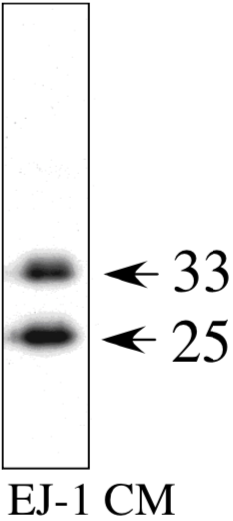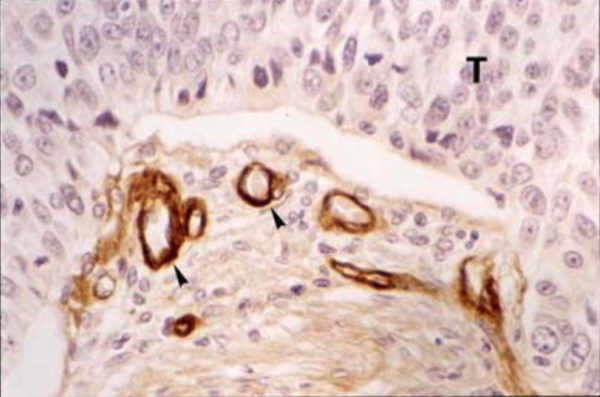
Anti Insulin-Like Growth Factor-Binding Protein 7 (IGFBP-7/IGFBP-rP1) mAb (Clone 88)
CAC-YCU-MK-TF01
Product group Antibodies
Overview
- SupplierCosmo Bio USA
- Product NameAnti Insulin-Like Growth Factor-Binding Protein 7 (IGFBP-7/IGFBP-rP1) mAb (Clone 88)
- Delivery Days Customer16
- CertificationResearch Use Only
- Scientific DescriptionThe insulin-like growth factors (IGFs) are proteins with high sequence similarity to insulin. IGFs are part of a complex system that cells use to communicate with their physiologic environment. This complex system (often referred to as the IGF axis) consists of two cell-surface receptors (IGF1R and IGF2R), two ligands (Insulin-like growth factor 1 (IGF-1) and Insulin-like growth factor 2 (IGF-2)), a family of seven high-affinity IGF-binding proteins (IGFBP1 to IGFBP7), as well as associated IGFBP degrading enzymes, referred to collectively as proteases. [from: Wikipedia contributors. (2019, May 23). Insulin-like growth factor. In Wikipedia, The Free Encyclopedia. Retrieved 17:42, June 4, 2019, from https://en.wikipedia.org/w/index.php?title=Insulin-like_growth_factor&oldid=898477681] Insulin-like growth factor-binding protein 7 is a protein that in humans is encoded by the IGFBP7 gene.[5][6][7] The major function of the protein is the regulation of insulin-like growth factor (IGF) availability in tissue as well as in modulating IGF binding to its receptors. IGFBP7 binds to IGF with high affinity.[8] It also stimulates cell adhesion. The protein is implicated in some cancers.[9] [adapted from: Wikipedia contributors. (2019, April 15). IGFBP7. In Wikipedia, The Free Encyclopedia. Retrieved 17:29, June 4, 2019, from https://en.wikipedia.org/w/index.php?title=IGFBP7&oldid=892525075] References: 1) Koike A., Uematsu Y., Bonkobara M., Yamaguchi T., Washizu T., Arai T. (2007) 144th Annual Meeting of Japanese Society of Veterinary Science, I-39. 2) Uematsu Y, Yamaguchi T, Koike A, Yagihara H, Hasegawa D, Matsuki N, Ono K, Washizu T, Arai T, Bonkobara M. (2008) Generation of Monoclonal Antibody against Canine Neural-Cell Adhesion Molecule. Journal of Veterinary Medical Science. 70(8):845-847
- UNSPSC12352203

